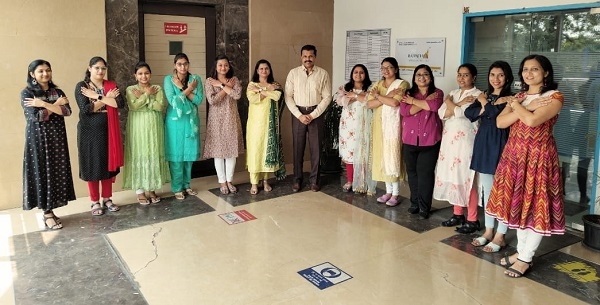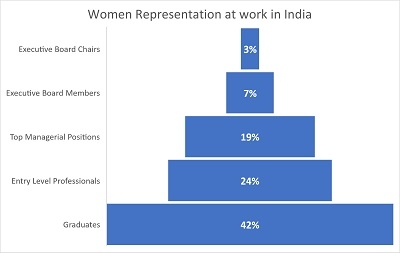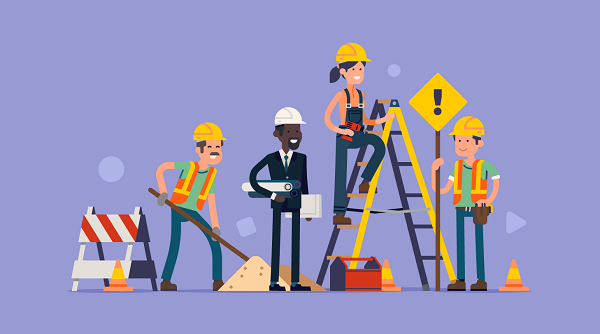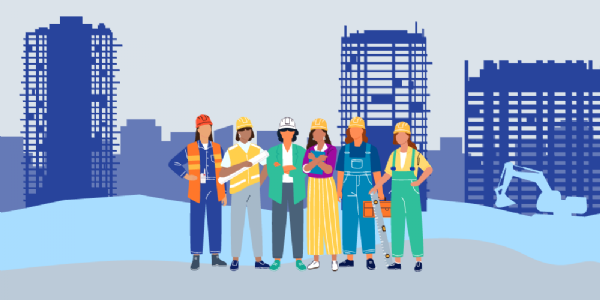The New Definition of Women leaders- Challenges and Benefits
Total Views |
The infrastructure sector has traditionally been a male-dominated field. However, with the growing emphasis on gender equality and diversity, the definition of women leaders in this sector has transformed. Today, women leaders in infrastructure are defined not just by their gender anymore, but by their skills, expertise, and leadership qualities.

The percentage of women employed in the construction industry varies between and within public works programs, and between regions. The Representation of Women at work in India is shown in the infographic below.
Women make up 42% of recent graduates in India, but only 24% of entry-level professionals. About 19 percent of these move on to top managerial positions. Only 7.7% of board seats and 2.7% of board chairs are held by women. Only 1-2 percent of workers in the construction industry make it to the highest management positions, further reducing the number.

Women’s participation is relatively higher in community-based infrastructure.
Community-based rural infrastructure programs can be developed, carried out, and funded by governments, donors, or NGOs in ways that promote the full involvement of local stakeholders in the design, implementation, management, and maintenance of the new assets. These programs can also be entirely planned and carried out by local communities using local labor and resources.
Because these jobs are in or near the village, women can easily combine them with their domestic and care responsibilities. Many of these projects have reported high or even majority female participation.
There were and still are gender biases in some places in India regarding the career choices women or girls make. Most women in parts of India are questioned about the choice of the field they choose to study, especially when they choose fields such as engineering. Not only is the participation low, but there is also a substantial disparity between women’s employment status pay and professional upgradation opportunities as compared to men in the industry in not just the engineering field but in other labor-oriented fields. The exact percentage of women in different roles in construction work in India is not readily available as there is no central database for this information. However, according to the ILO report, the percentage of women in construction in India is estimated to be around 4 to 5 percent, and they are mainly employed in non-technical and non-supervisory roles.
But with increasing opportunities in today’s time, women are taking over new fields of career and paving a path for future generations. There is an increase in the number of women choosing the area of infrastructure sector to work and build a career, that was once male-dominated.

Women are setting the way for a new, self-assured, highly effective leadership style.
The world as we know it is changing thanks to women leaders. The extremely few women who hold senior leadership positions impact an organization's culture when they do so. Contemporary women in leadership roles we can see are Falguni Nayar (Founder, and CEO of Naykaa), Kiran Mazumdar-Shaw (Founder, of Biocon Limited and Biocon Biologics Limited), Namita Thapar (Executive Director of Emcure Pharmaceuticals). From varied likes of E-commerce to Pharmaceuticals, these women have paved a path to success through hard work.
One such woman whose leadership has paved a path in the infrastructure sector for future generations is the director of Raj Path Infracon. Mrs. Mohana Kadam. Coming with an architectural PG degree she has taken this infrastructure company to another professional level altogether. As the director of Raj Path, she not just manages the finance portfolio but also governs the entire and overall backend operations of the organization. She is the backbone of Raj Path Infracon Pvt. Ltd.
Throughout the Guinness World Record project, she created a smooth process by communicating with the team remotely and making sure the work gets done without any obstacles. She leads the Finance and Controlling department along with the Accounts department and all allied activities about their functions. With her expertise, she has brought continuous improvement to the office processes. We at Raj Path Infracon Pvt. Ltd. Endorse #EmbraceEquity every day.

Infrastructure as a challenging field for Women's-
The infrastructure sector is a complex and challenging field, and women leaders face several challenges navigating it, each day. Women leaders in the infrastructure sector still face gender bias, which impacts their ability to advance in their careers. This bias can manifest in many forms, including unequal pay, lack of opportunities, and stereotypes. Women leaders are still underrepresented in the infrastructure sector, particularly in leadership roles. This lack of representation can make it difficult for women to find mentors, build networks, and gain access to opportunities.
Despite these challenges, having women leaders in the infrastructure sector can bring about several benefits. They rise from these challenges with a diversity of thought, women bring a different perspective to the infrastructure sector, which can lead to more creative and innovative solutions. This diversity of thought can be particularly valuable in an industry that is often characterized by a "male way" of thinking.
Studies have shown that companies with more women in leadership positions tend to have better financial performance. According to a Credit Suisse study, businesses with 25% women in decision-making positions had a 4% higher average return on investment, and businesses with 50% women in senior leadership had a 10% higher cash flow return on investment. This is likely due to the diverse perspectives and skills that women bring to the table.
The definition of women leaders in the infrastructure sector has evolved in recent years, and women are now being recognized for their skills, expertise, and leadership qualities, rather than just their gender. While women leaders in this sector still face many challenges, including gender bias, lack of representation, and work-life balance, they also bring diverse perspectives including diversity of thought, improved collaboration, better stakeholder engagement, and improved business outcomes.
As the infrastructure sector continues to grow and evolve, it will be important to continue to support and promote women leaders, both for the benefit of the sector and for the advancement of gender equality more broadly.

